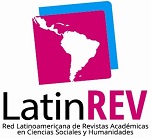Freud x Lacan: ¿Dualidad o complementariedad en el estudio de la angustia?
DOI:
https://doi.org/10.26490/uncp.horizonteciencia.2020.18.417Abstract
The object of study of this work is the compilation of the theory of the concept of anguish developed by Freud in its relations with the concept of repression. Throughout his work, there are two theories and several elaborations about anguish. Freud after 1925/6 often refers to his two theories, although to some extent theories overlap and intertwine. Until 1925/6 the term anguish is understood as the effect of excessive dammed stimuli due to non-drive satisfaction. The subject prevented from discharging the sexual libido, over the accumulation of arousals, turns them into symptoms of fear, causing sweating, tachycardia, muscle contractions, among others. Concrete external circumstances or insufficient maturation prevent the subject from freely satisfying his drive urges and produce distress states. Freud's idea is old when he writes his letters to Breuer, and compiles in “The Psychic Mechanism of Hysterical Phenomena” (1996, p. 41) on the Psychic Mechanism of Hysterical Phenomena: “that excess stimuli are experienced by the subject as something overwhelming that leads him to a state of fear and helplessness”. In this way, repression eventually produces the various forms of anxiety neurosis. By reformulating his theory of anguish, Freud maintains the idea that the subject exposed to excessive arousal lives in a situation of helplessness, needing to deal with the swirling stimuli that affect him in the face of real or imaginary threat of data. It develops the Theory of the Second Topic, and situates the EU as a place of fear and presents another conception of the relationship between repression and anguish, reverses the previous sequence of repression produced by anguish and states that it will be the anguish that the EU feels towards the danger, which will lead the subject to repression. Basically, fears such as the fear of castration or the fear of loss of maternal love will lead the subject to repress his libidinal tendencies.Downloads
References
Carvalho, Uyratan. (2002). Introdução Psicanálise I. 4ª. Ed. Reproarte Ed. Rio de Janeiro - RJ
Freud, S. Studienausgabe, Frankfurt, S. Fischer VerIag, (1972). Drei Abbandlungen zur Sexualtheorie, 1905, v. 5, p. 37-147. Über einen besonderen Tvpus der objektwahl beim Manne, (1910), v. 5, p.185-195. Eine Kindheitserinnerung des Leonardo da Vinci, (1910), v. 10, p. 88-159. Zur Einführung des Narzissmus, (1914), v. 3, p.37-68. Das Unbewusste, (1915), v. 3, p.119-174. Trauer wtd Melancholie, (1917), v. 3, p. 183-212. Das Ich und das Es, (1923), v. 3, p. 273-330. Fetichismus, (1927), v. 3, p. 379-388.
Freud, S. e Breuer, J. (1996). Sobre o mecanismo psíquico dos fenômenos histéricos: Comunicação Preliminar, (1895). Estudos sobre histeria em Standard Brasileira das Obras Psicológicas Completas de Sigmund Freud. Rio de Janeiro: Imago.
Greenberg & Mitchell. (1994). Relacões Objetais na Teoria Psicanalítica. Porto Alegre. Artes Médicas.
Lacan, J. (1995). Seminário 4: a relação de objeto. Rio de Janeiro: Zahar. [Trabalho original
publicado em 1956].
Zimerman, E. (2010). Fundamentos Psicanalíticos. Teoria, técnica e clínica. Porto Alegre. Artmed.
Downloads
Published
Issue
Section
License
Copyright (c) 2020 Horizonte de la Ciencia

This work is licensed under a Creative Commons Attribution-NonCommercial 4.0 International License.
















